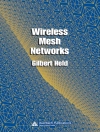Advances in experimental technologies have given rise to tremendous amounts of biology data. This not only offers valuable sources of data to help understand biological evolution and functional mechanisms, but also poses challenges for accurate and effective data analysis.
This book offers an essential introduction to the theoretical and practical aspects of association analysis, including data pre-processing, data mining methods/algorithms, and tools that are widely applied for computational biology. It covers significant recent advances in the field, both foundational and application-oriented, helping readers understand the basic principles and emerging techniques used to discover interesting association patterns in diverse and heterogeneous biology data, such as structure-function correlations, and complex networks with gene/protein regulation.
The main results and approaches are described in an easy-to-follow way and accompanied by sufficientreferences and suggestions for future research. This carefully edited monograph is intended to provide investigators in the fields of data mining, machine learning, artificial intelligence, and bioinformatics with a profound guide to the role of association analysis in computational biology. It is also very useful as a general source of information on association analysis, and as an overall accompanying course book and self-study material for graduate students and researchers in both computer science and bioinformatics.
สารบัญ
Chapter1:Computer science for Molecular biology.- Chapter2:Introduction to association analysis.- Chapter3:Introduction to computational linguistics and biology structure.- Chapter4:Matrix decomposition for dimensionality deduction.- Chapter5:Discovering conserved RNA secondary structures with structure similarity.- Chapter6:Gene ontology for non-coding RNAs classification.- Chapter7:Learning frequent sub-structure by graph mining.- Chapter8:Editing distance and its application to biology graph analytics.- Chapter9:Sequence assembly and applications.- Chapter10:Classifying protein structures by measuring structural similarity.- Chapter11:Identification of metabolic pathways with embedding network.- Chapter12:Emerging Knowledge integration-based approach with multi-sources data for bioinformatics.- Chapter13:Conclusion and Future Work.
เกี่ยวกับผู้แต่ง
Qingfeng Chen received his BSc and MSc degrees in Mathematics from Guangxi Normal University, China, in 1995 and 1998, respectively, and his Ph D in Computer Science from the University of Technology Sydney in September 2004. He is currently a Professor at Guangxi University, China and an honorary research fellow at La Trobe University, Australia. He has published many papers in top venues for machine learning and artificial intelligence, serves as an associate editor for top journals including Complexity & Intelligent systems, and has co-chaired several international conferences.












